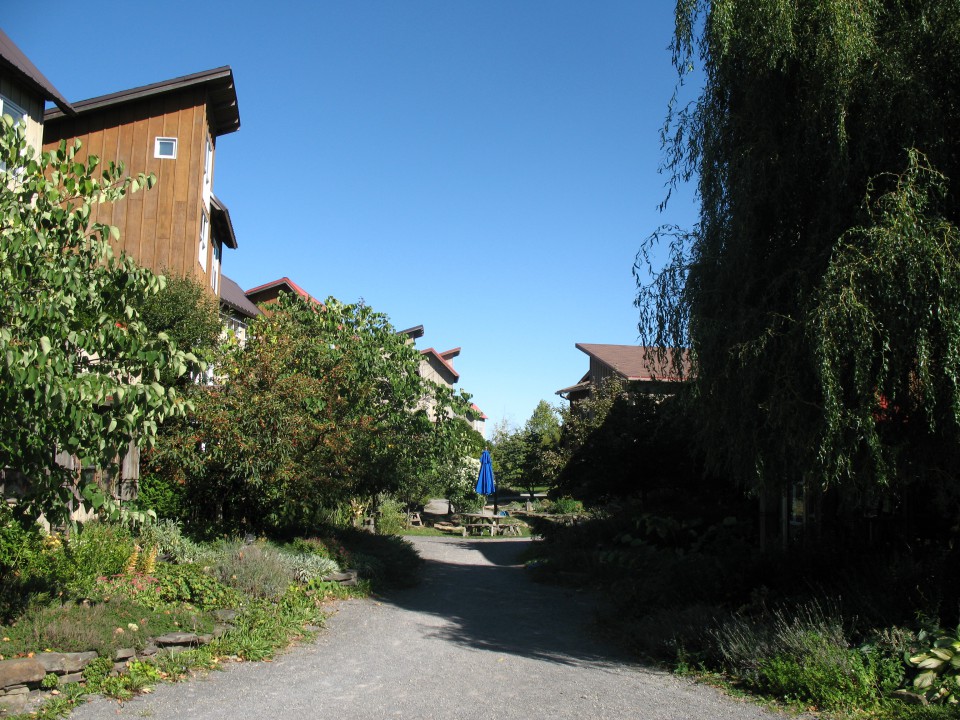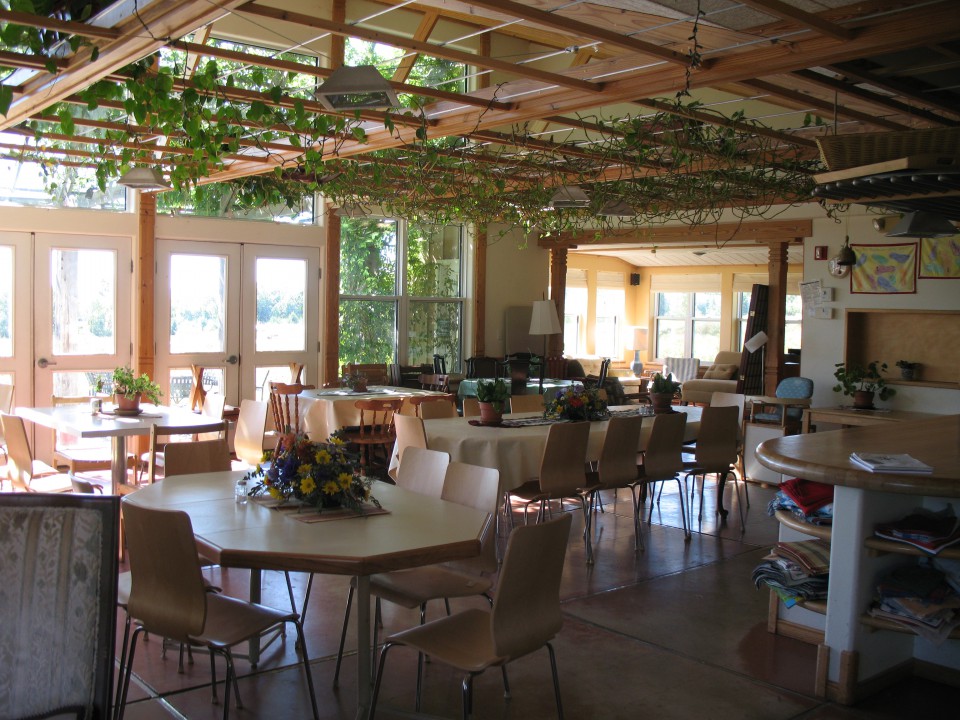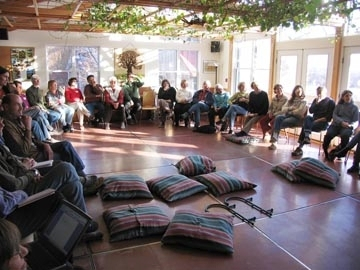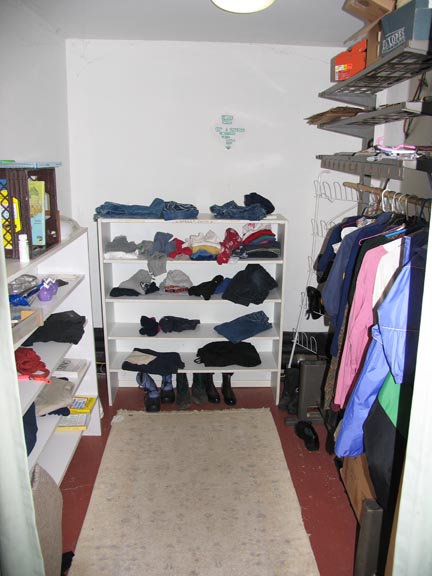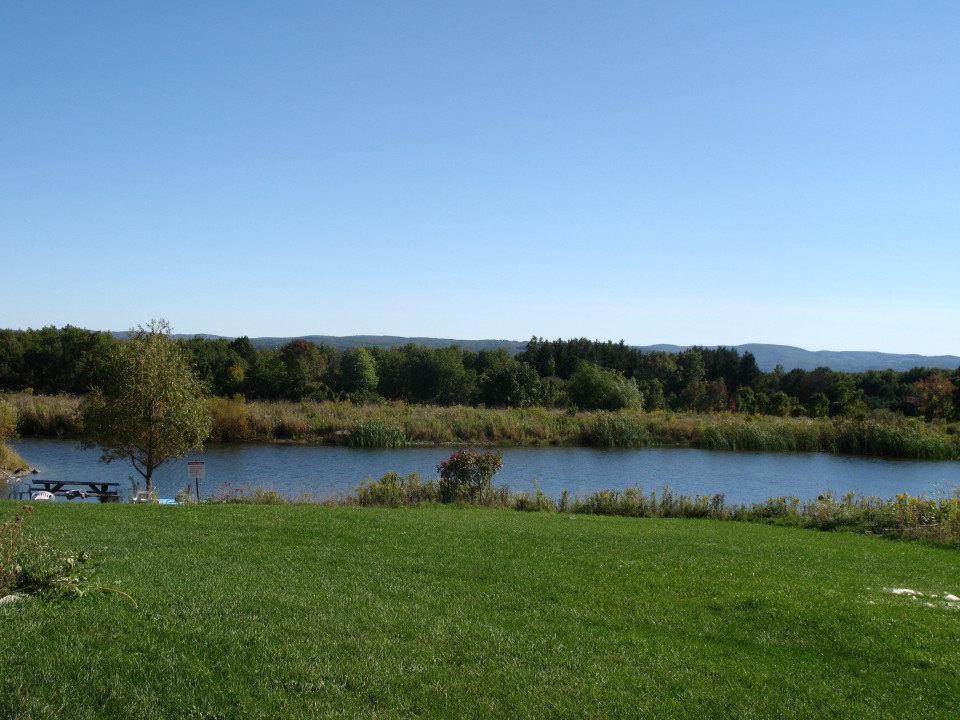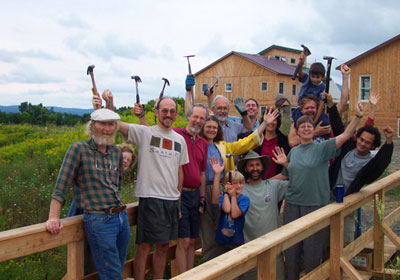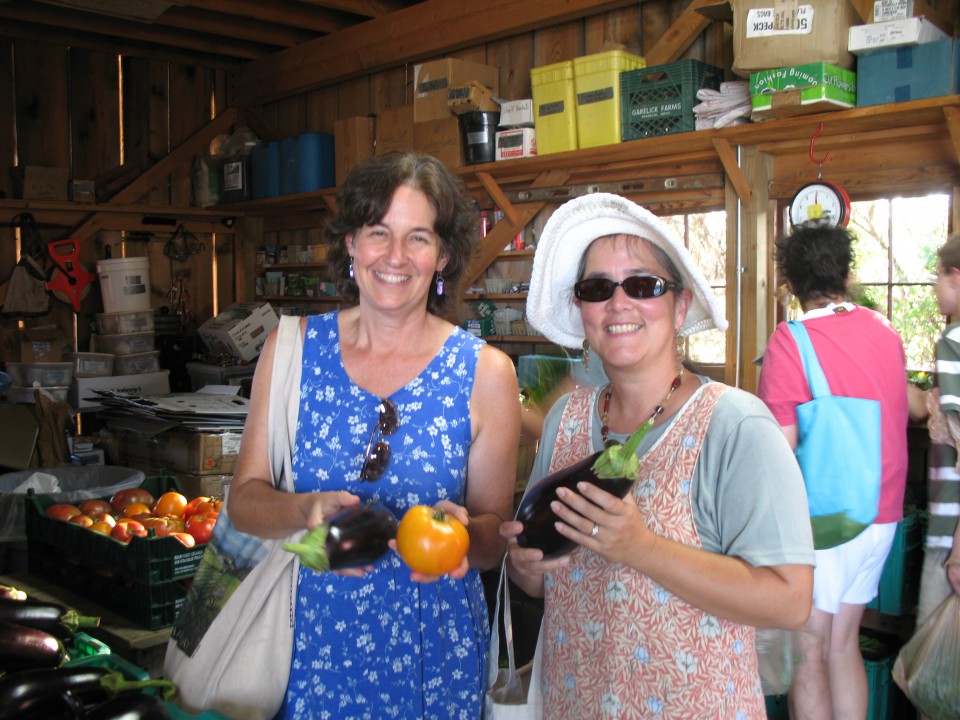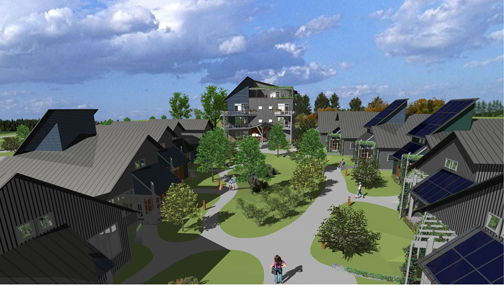Ecovillage at Ithaca
EcoVillage at Ithaca, with its architectural designs and angular wooden construction, sees itself as a model for middle America.
A suburban co-housing community with roughly 100 adults and 60 children living on 175 acres in upstate New York, EVI has succeeded in reducing its average per capita ecological footprint to about half the U.S. average, while enjoying most of the comforts and conveniences of the proverbial American Dream—plus much more.
Residents enjoy trails for walking and cross-country skiing and a pond for swimming and ice-skating, as well as the bounty from two ecovillage farms. Other amenities include a plethora of on-site businesses as well as offices for working from home, a tool library, car sharing, a children’s room, a fitness room, and much more.
EVI is now applying lessons from its first two neighborhoods, FROG and SONG, to build its third neighborhood (TREE). This will bring EVI one step closer to its projected population of 500. In building TREE, EVI has partnered with the EPA and Tompkins County to showcase the social and ecological benefits of tightly clustered, ultra-efficient homes in a pedestrian-friendly neighborhood. For more on TREE, see http://www.ecovillageithaca.org/treenew/index.php
Official site: http://ecovillageithaca.org/evi/
Virtual tour http://ecovillageithaca.org/evi/index.php/about/virtual-tour

